RNA fine-tunes estrogen receptor-alpha binding on low-affinity DNA motifs for transcriptional regulation
- PMID: 39284910
- PMCID: PMC11535219
- DOI: 10.1038/s44318-024-00225-y
RNA fine-tunes estrogen receptor-alpha binding on low-affinity DNA motifs for transcriptional regulation
Abstract
Transcription factors (TFs) regulate gene expression by binding with varying strengths to DNA via their DNA-binding domain. Additionally, some TFs also interact with RNA, which modulates transcription factor binding to chromatin. However, whether RNA-mediated TF binding results in differential transcriptional outcomes remains unknown. In this study, we demonstrate that estrogen receptor α (ERα), a ligand-activated TF, interacts with RNA in a ligand-dependent manner. Defects in RNA binding lead to genome-wide loss of ERα recruitment, particularly at weaker ERα-motifs. Furthermore, ERα mobility in the nucleus increases in the absence of its RNA-binding capacity. Unexpectedly, this increased mobility coincides with robust polymerase loading and transcription of ERα-regulated genes that harbor low-strength motifs. However, highly stable binding of ERα on chromatin negatively impacts ligand-dependent transcription. Collectively, our results suggest that RNA interactions spatially confine ERα on low-affinity sites to fine-tune gene transcription.
Keywords: Chromatin; DNA-motifs; Estrogen Receptor-Alpha; Non-Coding RNA; Transcription Factors.
© 2024. The Author(s).
Conflict of interest statement
The authors declare no competing interests.
Figures
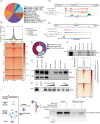
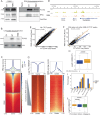

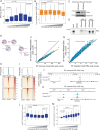

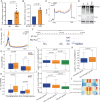

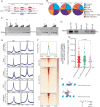



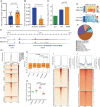
Similar articles
-
Cooperativity of co-factor NR2F2 with Pioneer Factors GATA3, FOXA1 in promoting ERα function.Theranostics. 2019 Aug 21;9(22):6501-6516. doi: 10.7150/thno.34874. eCollection 2019. Theranostics. 2019. PMID: 31588232 Free PMC article.
-
Research resource: whole-genome estrogen receptor α binding in mouse uterine tissue revealed by ChIP-seq.Mol Endocrinol. 2012 May;26(5):887-98. doi: 10.1210/me.2011-1311. Epub 2012 Mar 22. Mol Endocrinol. 2012. PMID: 22446102 Free PMC article.
-
Regulation of estrogen receptor α by histone methyltransferase SMYD2-mediated protein methylation.Proc Natl Acad Sci U S A. 2013 Oct 22;110(43):17284-9. doi: 10.1073/pnas.1307959110. Epub 2013 Oct 7. Proc Natl Acad Sci U S A. 2013. PMID: 24101509 Free PMC article.
-
Transcriptional and Chromatin Regulation during Fasting - The Genomic Era.Trends Endocrinol Metab. 2015 Dec;26(12):699-710. doi: 10.1016/j.tem.2015.09.005. Epub 2015 Oct 29. Trends Endocrinol Metab. 2015. PMID: 26520657 Free PMC article. Review.
-
Single-molecule imaging for investigating the transcriptional control.Mol Cells. 2025 Feb;48(2):100179. doi: 10.1016/j.mocell.2025.100179. Epub 2025 Jan 13. Mol Cells. 2025. PMID: 39814141 Free PMC article. Review.
Cited by
-
Hallmarks of glucocorticoid receptor condensates involvement in transcription regulation.iScience. 2025 May 15;28(6):112678. doi: 10.1016/j.isci.2025.112678. eCollection 2025 Jun 20. iScience. 2025. PMID: 40520091 Free PMC article.
References
-
- Anon. n.d. Picard tools - by Broad Institute. http://broadinstitute.github.io/picard/
-
- Aiello A, Bacci L, Re A, Ripoli C, Pierconti F, Pinto F, Masetti R, Grassi C, Gaetano C, Bassi PF, Pontecorvi A, Nanni S, Farsetti A (2016) MALAT1 and HOTAIR long non-coding RNAs play opposite role in estrogen-mediated transcriptional regulation in prostate cancer cells. Sci Rep. 6:38414 - PMC - PubMed
MeSH terms
Substances
Grants and funding
LinkOut - more resources
Full Text Sources
Miscellaneous

